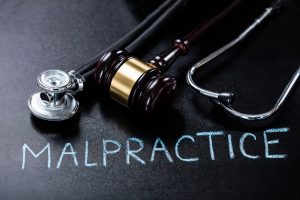The Maryland Court of Appeals reached a decision in University of Maryland Medical System v. Waldt, a case that is reverberating among medical malpractice lawyers in Maryland. (Note: In yet another incredible turn, the Maryland high court has – temporarily at least – withdrawn this opinion.) Yet the back story is better than the case. Two of the most prolific lawyers in Maryland’s history tried this case: Steve Snyder and Billy Murphy. As discussed below, Steve Snyder said he would retire if he lost this case on appeal. (I think he will get a takey-backsie on this one.) In the trial, the Baltimore City judge that tried the case had to give this admonition:
“This is it. Last warning to everybody,” she said. “No finger-pointing, children. No stomping your feet. No screaming. No yelling. No dancing around. No calling names. No throwing sticks and stones. No putting gum in each other’s hair.”
So it got out of control. (More on that later.) But this opinion is important; the underlying trial was an epic and personal war, and Maryland malpractice law is much more clear or an abyss of confusion, depending upon who you ask. While you take a breath, let’s talk about the facts.
This is the tragic case of a Mount Airy woman who was paralyzed on her left side as the result of an operation to treat a brain aneurysm. Plaintiff underwent a procedure at the University of Maryland Hospital to treat an aneurysm which caused bleeding that lead to her injuries, according to the evidence offered by Plaintiff’s attorney at trial.
At trial, Plaintiff called an expert to offer opinions both on the standard of care and on informed consent. The trial judge, Baltimore City Circuit Court Judge Lynn Stewart, excluded the expert’s testimony because the expert devoted over 20% of his professional activities to activities that directly involve testimony in personal injury claims. (Maryland law requires malpractice experts to spend less than 20% of their time in medical malpractice or other personal injury cases.) Because this was the Plaintiff’s only expert, the court directed judgment in favor of the Defendants.
The expert was not just some random guy. He held positions at Massachusetts General Hospital, Harvard, and John Hopkins. The doctor was also not caught up in the medical malpractice testifying racket: he made less than $50,000 a year. He had not, however, seen patients since 2001 and was no longer licensed to practice medicine in the United States. Interestingly, he said he had a medical license in France, but only to write prescriptions for family members. His professional activities included conducting literature peer reviews, reading journals, observing procedures, and discussing patients with former colleagues. His testimony at trial:
Murphy: Now, you testified that you no longer practice medicine but you handle cases for plaintiffs’ lawyers who are suing others for malpractice?
Expert: Yes.
Murphy: That’s all you basically do now except for read journals and go to an occasional meeting, right?
Expert: Yes.
Murphy: So, you are a professional witness, sir, aren’t you?
Slutkin: Objection, your honor.
Judge: Overruled.
Murphy: You are a professional witness, aren’t you, sir?
Expert: I guess I am.
The Maryland Court of Special Appeals disagreed that the expert should be disqualified, finding that the evidence showed that the expert did not violate the 20% rule. The Maryland Court of Appeals reversed and affirmed the judgment.
(Brief intermission: technically, it is the Court of Special Appeals of Maryland and the Court of Appeals of Maryland. But I think it sounds funny.) Continue reading
 Maryland Injury Law Center
Maryland Injury Law Center




